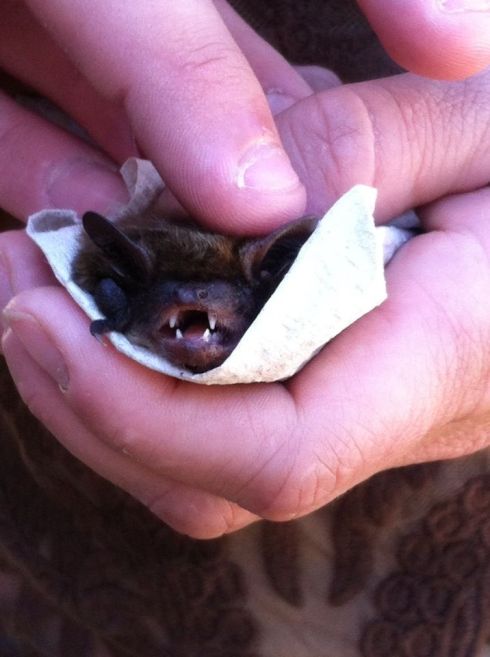Plans announced for ‘Bat House Party’ to benefit Dakota State
MAAC to support alternative housing fundraiser for DSU bat population
Angela Behrends, Dakota State University instructor, is fascinated with bats after working outdoors as a Naturalist for the South Dakota Game Fish and Parks (SDGFP) the last few summers. She recognized the benefit of bats as a natural insect predator.
At Dakota State University, most faculty and students are aware that bats frequently find their way into East Hall and Beadle Hall on the DSU campus. Remembering the poor, frightened bat that interrupted Behrends’ art history survey class in the East Hall auditorium compelled her to find out more about these creatures of the night and to implement the topic in one of her art classes at DSU.
This SDGFP and DSU convergence got Behrends thinking about how DSU could take on the bat situation while keeping the bats’ safety and security in mind, but still eliminating them from the interior atmosphere of the historic structures.
This semester, Behrends is teaching an Honors Art 121 Design 1 2D course comprised of 21 students. Along with the normal design work they will complete for the art class, their special honors project will focus on finding solutions for how the DSU community can co-exist with the campus bat community. The first step the class took towards a solution was to invite bat experts to campus to educate the class on bat basics.
Sarah Lewis, an SDSU graduate student studying artificial roosts for bats, and her advisor Associate Professor Dr. Scott Pedersen, spoke with the Art 121 class about their bat research: habits, habitats and other important bat information, to help the students devise a plan on how to humanely evict the unwanted indoor inhabitants of the campus buildings.
After the Lewis and Pedersen presentation, and with the help of Physical Plant Director Pat Keating, a small group took a tour of the attic of East Hall and the exteriors of East and Beadle Hall. The experts determined that the bat population around Beadle shows signs of being temporary roosts, which means the bat population will more than likely migrate to another location for winter. But, when the group toured the East Hall location, another conclusion of that bat population was determined.
The East Hall bats need to find an alternate habitat. The experts suggested conducting an exclusion, which means installing one-way shoots made of fabric or netting placed around the bat entry points, allowing the animals to exit the building safely. When the bats try to return to the entry point, they are unable to find the opening because the exclusion material covers points of entry, hence the term exclusion. Once the bats have left the building, their entry points are sealed. The removal tactic is hoped to rid the building of the unwanted visitors, and the installation of bat boxes on the exterior of the building may give the bats and alternate place to relocate. Exclusions should not be performed in the spring or summer when bat nursery roosts are established and functioning.
After it was determined that artificial roosts might improve the bat situation on the DSU campus, the Honors Art 121 class decided to do a fundraiser in order to purchase the high-quality bat boxes recommended by Lewis. The artificial roosts will be hung on East Hall. The goal of the group is to get the boxes installed this fall.
“Bat House Party” is an effort to raise the funds to purchase bat boxes, in conjunction with the Madison Area Arts Council. This costume party fundraiser is being held on Wednesday, Oct. 30th at The BrickHouse in Madison. At the evening event, one-of-a-kind postcards and hand-made masks created by DSU art students will be for sale. In addition, the Madison Area Arts Council is asking for donations of bat-themed art created by DSU art faculty and local area artists. More details of the fundraiser will be released later next week.
A single hunting bat can consume more than 1,000 mosquitos an hour. Most bats we see in our buildings are Big Brown Bats (which usually weigh under 30 grams). Red bats are extremely beneficial to area farmers since they have a specialized diet, eating exclusively corn moths. Behrends said, “If we think about it, we don’t want bats to disappear. The presence of bats in our community is a sign of a healthier ecosystem. We want to encourage more bat habitat around Madison, and then the bats could eat the bugs instead of us spraying insecticides on our skin and around the city.”
